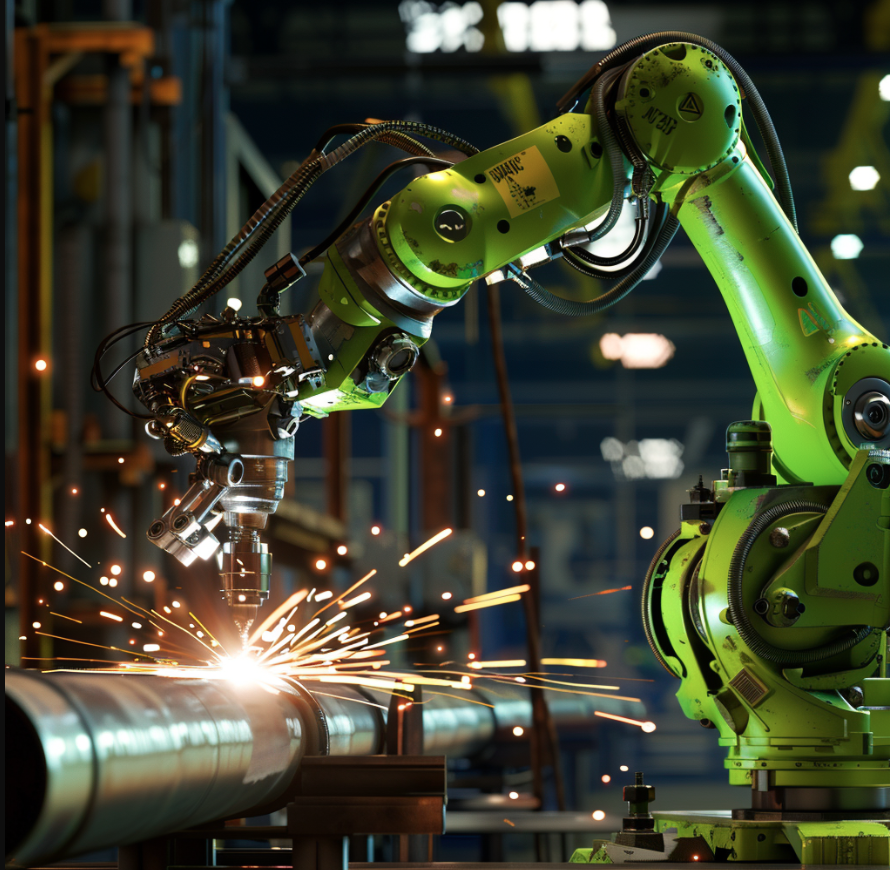

Pipe welding robots, also known as automated welding machines, are robotic arms that are programmed to automatically weld pipe joints and seams.
A pipe welding robot replaces a human welder by using a robotic arm to precisely guide a welding torch along the joint between two pipe sections.
The robotic welding arm is controlled by a computer that guides its movement according to a pre-programmed pattern.
It’s made out of several key components:
Robotic arm: The physical arm that moves the welding torch, providing multiple degrees of freedom for complex weld paths.
Control system: The "brain" of the robot, responsible for programming and executing precise movements.
Seam tracking: Advanced sensors (often cameras or lasers) that allow the robot to locate the seam between pipes and adjust its welding path in real-time to compensate for any variations.
Welding tech: The robot will use a specific welding process like MIG, TIG, or plasma arc welding.
Pipe welding robots offer quite a few benefits over run-of-the-mill manual welding.
Let’s take a look:
Pipe welding robots, while offering many benefits, also come with some downsides to consider.
Let’s explore this a bit more:

Pipe welding robots have several useful applications in a wide variety of industries.
That’s the gist of it: A pipe welding robot can be pretty handy for certain applications, but it’s not perfect.
As we’ve gone over, pipe welding automation excels at repetitive tasks in hazardous environments, but has limitations when it comes to adaptability and working in tight spaces.
But, as the technology develops, we are already seeing robots that are more nimble and better at adjusting to on-the-fly changes.
Robotic welding has certainly come a long way and will continue to play a major role in many industries. Now, it’s just a matter of assessing your budget, application, and facilities to ascertain whether pipe welding automation is viable for you!
Upgrade your production with RO1! This revolutionary robot arm from Standard Bots makes automation accessible and empowers businesses of any size.
Experience RO1's impact firsthand with our 30-day trial. Our team will guide you through setup and make sure it transforms your workflow.